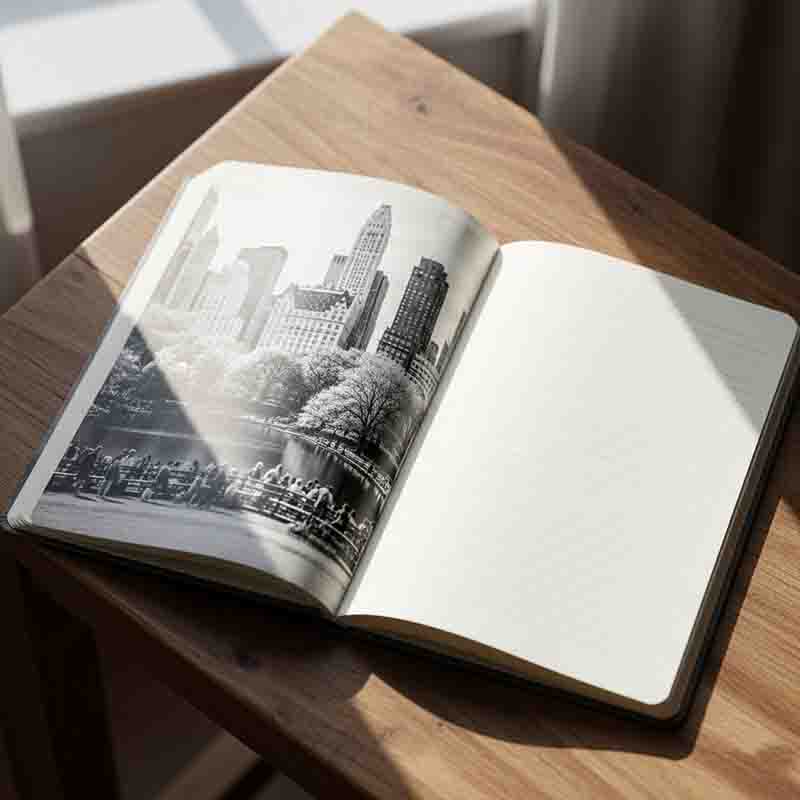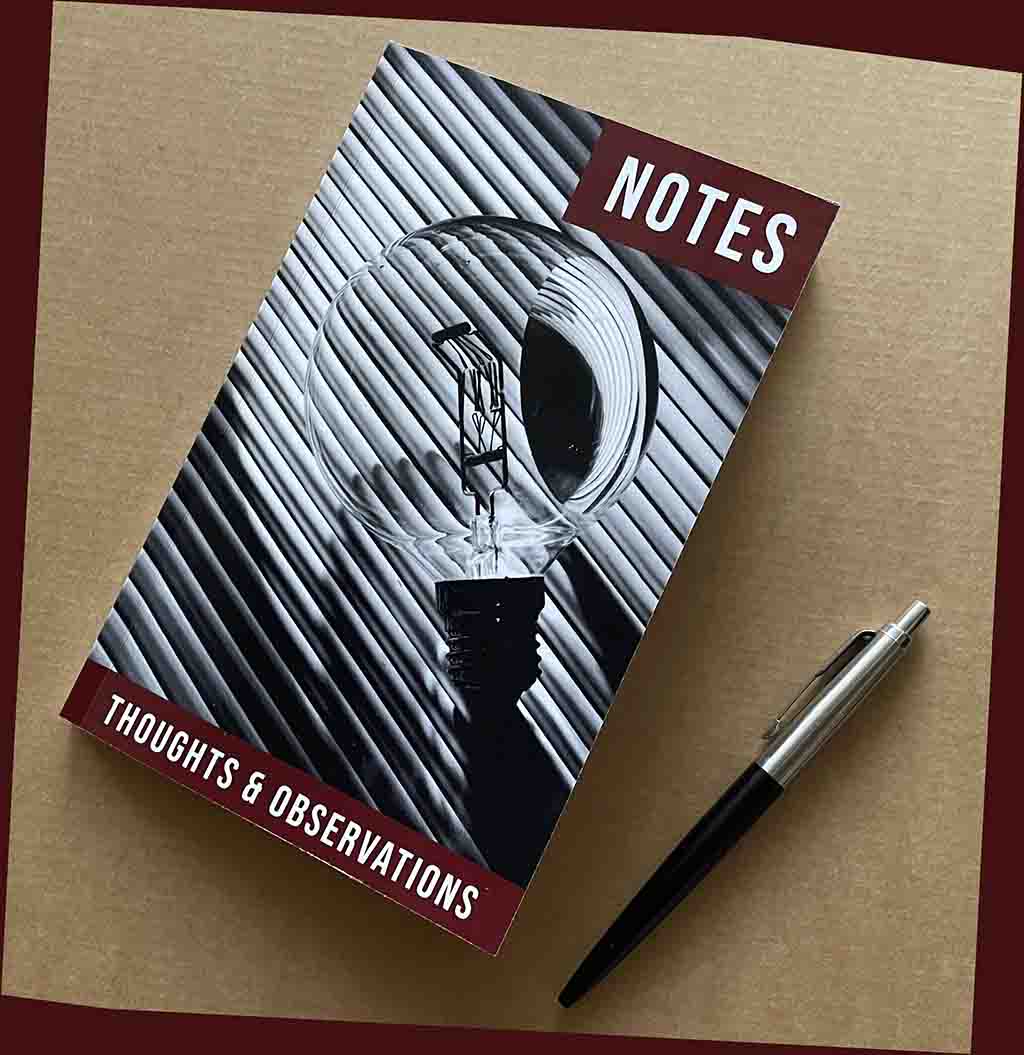Lined Pages for Notes, Ideas & More
A notebook is a bound collection of writing paper used for capturing information by hand. It comes in many formats, lined, grid, dotted, or blank pages, and serves a wide range of purposes, including academic use, journaling, sketching, and planning.

Whether digital or paper based, notebooks are useful tools that help people think, remember, and create.
From Clay to Cloud: The Long Life of the Notebook
Before cloud storage and smartphones, before keyboards and cathode ray screens, the human urge to record, to make marks, lists, sketches, and plans found expression in something far simpler: the notebook.
Though simple in design, their function spans education, business, art, and personal development.
For centuries, it has remained a fixture in classrooms, courtrooms, artist studios, and kitchens alike.
Yet across demographics, from students and scientists to designers and diarists, the appeal of pen and paper persists.
The notebook, in all its forms, continues to offer something that screens often do not: privacy, tactility, and undistracted space for thought.
Now, as analog meets algorithm, the notebook continues to evolve, adapting without disappearing.

Ready to Write Your Story?
Notebooks reflect a universal need: to write things down, and remember to them.
-
Featuring 120 pages
-
Crafted for the modern diarist
-
$ 9,99
Whether scribbled in haste or penned with care, the contents of a notebook are more than notes, they are extensions of memory, intention, and identity.
12 Facts To Know About Notebooks
-
Origins Date Back to Antiquity: The earliest form of notebooks was the wax tablet, used by ancient Greeks and Romans. These were reusable and served for temporary notes.
-
Codices Replaced Scrolls: The codex, a bound book made of folded parchment, emerged around the 1st century CE and became the structural ancestor of the modern notebook.
-
Table-Books Were Early Reusable Notebooks: In the Renaissance, "table-books" with erasable treated pages were used widely for writing and erasing notes—precursors to smart notebooks.
-
Mass Production Began in the 19th Century: The Industrial Revolution enabled large, scale paper manufacturing and affordable notebooks, making them common for students and workers.
-
The Legal Pad Was Invented in 1888: Created in the U.S., the legal pad standardized paper size and added left margins, becoming a staple in legal and business settings.
-
Composition Notebooks Became a School Standard: These notebooks, stitched at the spine with sturdy covers, gained popularity in the early 1900s and are still widely used in classrooms.
-
Notebook Types Serve Different Purposes: Common types include journals, planners, composition books, sketchbooks, and pocket notebooks, each designed for specific use cases.
-
Smart Notebooks Bridge Analog and Digital: Modern smart notebooks like Rocketbook and Moleskine Smart Writing Set allow handwritten notes to be scanned, stored, and reused digitally.
-
Handwriting Has Cognitive Benefits: Writing in notebooks improves memory retention and comprehension more effectively than typing, making them useful for learning and creative thinking.
-
Paper Ruling and Binding Vary by Function: Notebooks offer lined, dotted, grid, or blank paper, with spiral, stitched, or disc-bound formats to suit different needs.
-
Notebooks Face Search and Sharing Limits: Unlike digital tools, traditional notebooks lack features like searchability, real-time sharing, and backup—making content management harder.
-
Despite Technology, Notebooks Remain Relevant: Even with widespread digital adoption, notebooks persist due to their simplicity, reliability, and distraction, free writing experience**.
A notebook is a simple yet powerful analog tool used for writing, sketching, planning, and note-taking.

"Notes, Thoughts & Observations" offers something different: a place to slow down, look around, and listen to yourself. One page at a time.
Notebooks: Timeline
The history of notebooks spans thousands of years and reflects humanity's evolving need to record, organize, and preserve information.
From early wax tablets to reusable smart notebooks, the story of the notebook is one of adaptation, utility, and cultural significance.
| Year | Milestone |
|---|---|
| c. 5th century BCE | Wax Tablets (Ancient Greece & Rome), reusable writing surfaces for notes and records. |
| c. 2500 BCE | Papyrus Scrolls (Ancient Egypt), early form of recording information, but bulky and non-portable. |
| 1st century CE | Codex, bound pages replaced scrolls; laid foundation for modern notebook design. |
| Middle Ages | Parchment Books, used by monks and scholars for religious and scholarly texts. |
| 15th-17th century | Table-Books (Renaissance Europe), reusable books with treated pages; popular for writing and erasing notes. |
| 17th century | Wider use of bound notebooks due to cheaper paper production. |
| 19th century | Paper and notebooks became affordable and available to the general public. |
| 1888 | Legal Pad (USA), introduced margin formatting and a standardized format for legal use. |
| Early 1900s | Durable, stitched notebooks used widely in schools. |
| Mid-20th century | Spiral and Ring-Bound Notebooks Popularized |
| Late 20th century | Personal use expands to include self-reflection, scheduling, and goal-setting. |
| 1990s | Laptops Referred to as 'Notebooks'. Metaphor for portable computing; shift in terminology. |
| 2010s | Smart Notebooks Introduced (e.g., Rocketbook, Moleskine Smart Set) |
| 2020 | Smart notebooks support reusability and eco-conscious design. |
| Today | Notebooks and handwritten notes remain popular as they boost memory, deepen engagement, and spark creativity. |
Notebooks have helped people record information for thousands of years. They continue to serve many roles today, from education to creativity to productivity.
The Ultimate Guide to Notebooks: Sizes, Styles, and Features

It's not just about writing things down, it's about how those things feel when you look back at them.
Notebooks: Improve Memory, Focus, and Learning
In an age when digital tools promise boundless memory and instantaneous access, the enduring popularity of notebooks might seem paradoxical.
Yet across demographics, from students and scientists to designers and diarists, the appeal of pen and paper persists.
The notebook, in all its forms, continues to offer something that screens often do not: privacy, tactility, and undistracted space for thought.
An Ancient Technology Reimagined
The concept of portable, erasable writing surfaces dates back to antiquity.
Roman wax tablets served as the earliest iteration, reusable and compact.
In Egypt, scrolls of papyrus offered a medium for documenting ideas, though their length and fragility posed clear limitations.
These challenges were addressed by the codex, a bound collection of parchment or paper sheets, which laid the structural foundation for the notebooks we recognize today.
By the Renaissance, the so-called “table-book”, a precursor to modern notepads gained popularity.
Often treated with a coating that allowed ink to be wiped away, these early notebooks were favored by merchants, clerics, and even Shakespearean characters.
Their utility was clear: a private, flexible canvas for recording ideas.
Industrial Standardization and the Democratization of Thought
The 19th century ushered in sweeping change.
The mass production of paper, paired with innovations in binding and pen technology, made notebooks more affordable and accessible.
In 1902, J.A. Birchall of Tasmania transformed loose paper stacks into bound writing pads, anticipating the convenience and structure sought by professionals and students alike.
Legal pads, introduced in the late 1800s, offered an American variant, standardized with a left-side margin on yellow paper.
By the mid-20th century, composition books with black marble covers and stitched bindings had become a staple in schools across the United States.
Notebooks allowed people to become their own archivists, they became personal repositories of memory, creativity, and discipline.
Categories and Cultural Signals
Though “notebook” is used generically, distinctions among notebooks, journals, diaries, and planners are meaningful.
Journals are typically reflective, used to process emotions or track personal growth.
Planners, by contrast, serve a proactive function, organizing future events, tasks, and goals.
Meanwhile, composition notebooks remain utilitarian, built for academic rigor with their durable covers and uniform size.
Pocket notebooks, once the domain of police officers and reporters, now thrive as stylish accessories for creatives and minimalists.
Brands like Field Notes and Moleskine have built identities around nostalgia and design, targeting users who crave analog tools in digital times.
Analog's Strength in a Digital Age
Despite the frictionless nature of typing, writing by hand offers cognitive benefits.
Studies suggest that handwriting improves retention and comprehension, prompting some educators to encourage a return to pen and paper for note taking.
Still, notebooks are not without limitations.
They cannot be searched or backed up. They wear, tear, and fill up.
Pages cannot be rearranged. And in a culture built on connectivity, they resist sharing and collaboration.
To address these concerns, smart notebooks have emerged, blending analog handwriting with cloud based storage.
Devices like the Rocketbook Fusion or Moleskine's Smart Writing Set allow users to write on special paper, then digitize their notes via app.
Yet these tools raise new challenges, including cost, app dependence, and a learning curve that some find frustrating.
Material Choices and Personal Meaning
For musers, the choice of a notebook is not merely functional but expressive.
Paper type, lined, dotted, grid, or blank, dictates not only what can be written but how thoughts are shaped.
Binding methods (spiral, stitched, glued) determine durability and layout.
Cover materials, from leather to vegan alternatives, signal taste and occasion.
From Tools to Rituals
Notebooks are used not only to manage tasks, but to manage selfhood.
Journaling, whether for gratitude, therapy, or goal setting, has grown into a billion-dollar industry, spawning templates, guided prompts, and social media communities.
Bullet journaling, a method developed in 2013, blends productivity with mindfulness and design, reflecting a cultural hunger for structure in uncertain times.
Even in corporate settings, notebooks play a strategic role.
Executive planners and project notebooks serve as both record keepers and status symbols, analog expressions of intent in a digital world.
Focusing on Inspiration & Creativity
A notebook is a bound group of paper sheets.
Users write or sketch by hand using a pen or pencil.
Notebooks come in different sizes, paper types, and bindings.
Common types include composition notebooks, spiral notebooks, pocket notebooks, and journals.
Notebook: FAQ
Are you curious about music, art, technology, fashion, lifestyle, and beer?
If so, then you need to subscribe to the free Likewolf newsletter.
100% privacy. When you sign up, we'll keep you posted.

Likewolf's Typewriter
Likewolf writes about music, art, technology, fashion, lifestyle, and beer
LikewolfMysteries of the Future
Reveal Your Destiny with Every Card!